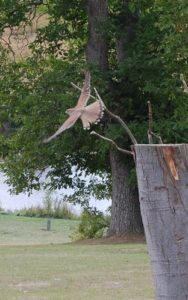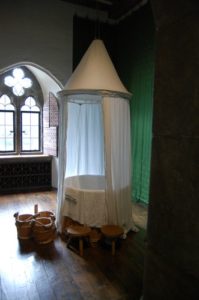At first sight the price of admission seems steep, even for 'the most beautiful castle in the world,' but on arrival the ticket is stamped valid for a year and a day. Nothing more deserves that fairy tale phrase than Leeds Castle.
No wonder several crowned heads, including the covetous Henry VIII, became custodians. Just walking through the grounds arouses the acquisitive instinct. The planting and birds, Canada geese, whooper and black swans, would certainly not have been there in medieval or Tudor times but there must have been other attractions. It is a constant delight, and all before the first glimpse of what any Hollywood producer of the golden age would have given a fortune to include in his scenario.
It is easy to imagine a knight home from the Crusades or a prince introducing his bride to her domain: you almost hear romantic strings sobbing in crescendo. In reality, though, there has to be diminuendo, as the walk leads around the lake (far too expansive to call moat), over a bridge and away from the main entrance to a little postern door. Then comes another musical swelling, with a succession of staircases and connecting rooms with splendid views and opulent furnishing. The entrance is reserved for leaving the building after a descent down the grand staircase.
Every resident gave Leeds his or her distinctive feature. Henry VIII is credited with the appropriately long dining gallery. Everywhere there are period paintings, in this case Henry's fleet setting sail for France and the Field of Cloth of Gold. There is the reconstructed bathroom of a medieval queen; from the seventeenth century is the buff coat worn by Lord Fairfax during his victory at Maidstone.
The eighteenth, nineteenth and twentieth centuries are also well represented, with interiors by French designers, family portraits done in situ, drawings and paintings by minorr Impressionists and the personal tastes of the last owner in drawings of her dogs and the painting of her sister's famous racehorse, Golden Miller. Finally, to that grand descent, at the foot of which is the life-size equestrian statue of Edward III, guaranteed to take any child's breath away.
Splendid though it may be, the interior serves as prelude for those with stamina, perhaps after refreshments at one of several options, all very good, to explore more formal gardens than before, a maze, and to enjoy in season a flying display of the resident falcons. It was all worth braving the uncertain weather at the end of a heatwave, and for anyone within reasonable travelling distance a bargain to return to as often as the year and a day continues.









